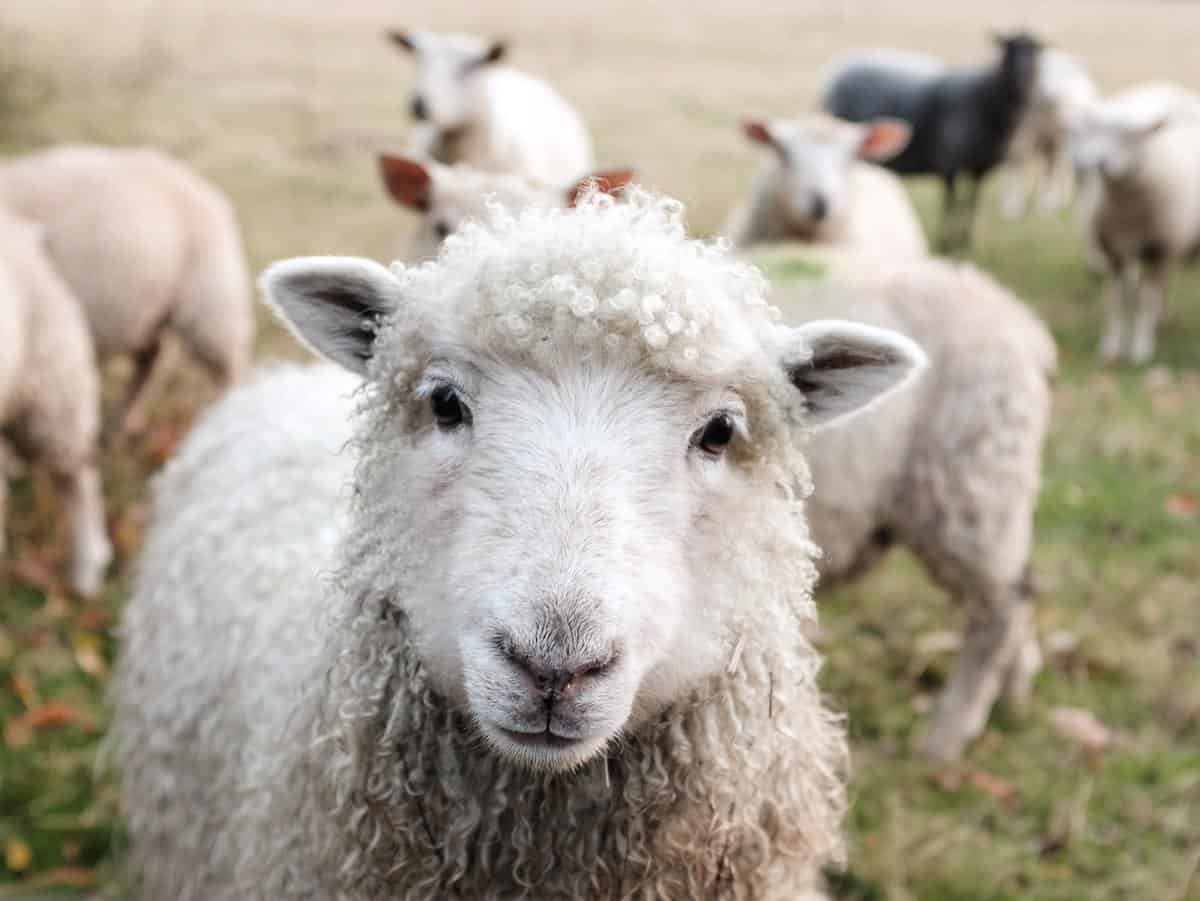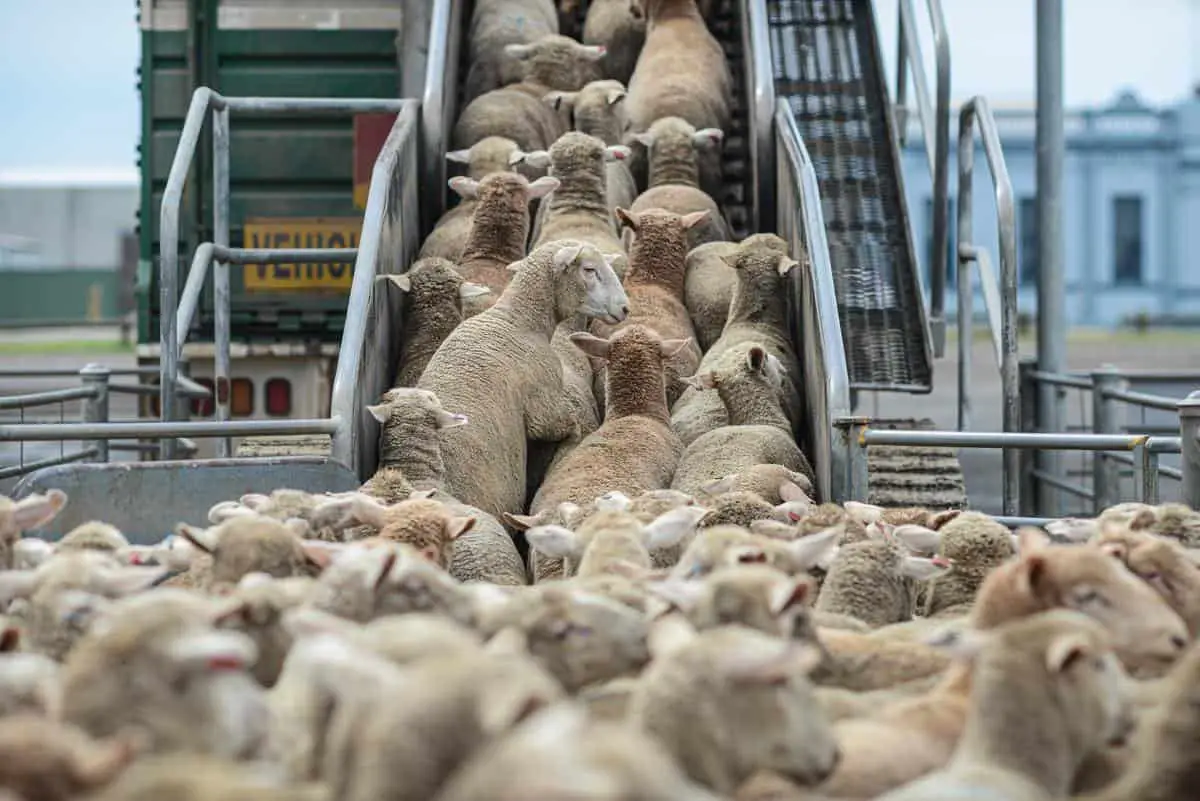Is it cruel to shear all the beautiful fluffy wool off sheep? Does it hurt them to be skinny and pink? And is it even necessary? After all, you’re removing a substantial protective coat. Luckily, the answer is not a doom and gloom as you might think.
Shearing sheep is not a cruel practice for domestic sheep and breeds that don’t shed their woolen coats naturally. Without it, untamed wool leads to serious health issues. However, subjecting the sheep to unnecessary cruelty during the farming and shearing process is common.
Domestic sheep shearing is not cruel in theory; in fact, it’s necessary. Issues around cruelty come in how the sheep are handled, especially in commercial farming. Before you buy a new woolen good – here’s what you need to know about ethical sourcing.
Can Sheep Shearing Be Cruel?
Sheep shearing should never require violence or cruelty towards these peaceful animals. Any professional sheep industry members worth their salt will never condone cruel treatment.
But, yes, there are some disadvantages to sheep shearing, and the main one is that it can be cruel!
Please know the examples we provide do not reflect the ideologies of the industry as a whole.
But we cannot ignore the fact that not everyone chooses the well-being of their animals of cash.
The problem is that sheep shearers almost always get paid per sheep, not by the hour. So unsavory businesses that prioritize quick work and profit over the sheep’s wellbeing are a big issue.
Below we talk about some of the brutal ways people perform sheep shearing that make the practice cruel.
Rushed Shearing Triggers Emotional Trauma
Since sheep shearers get paid for every sheep they shear, they can be incentivized to work quickly and not correctly.
Shearing should be calm and methodical, prioritizing the animal’s comfort and well-being.
But unethical shearers don’t consider that sheep are still prey animals and are easily traumatized by the buzzing of the shears, rough handling, and stressful environment.
Not to mention that these sheep are often injured or severely cut in the shearing process.
This affects the animals even more, and if the wounds are not treated properly, they can become infected or even fatal.
Unnecessary Restraint Causes Stress
The only form of restraint necessary for sheep shearing should be your legs. Sadly, certain inhumane professionals will tie down or place the sheep in a metal holder for the process.
This is extremely frightening for the sheep and increases their chances of hurting themselves and others.
Excessive Use of Violence Injure The Sheep
To pacify sheep that retaliate in fear during the shearing process, some individuals even go as far as to punch, kick, or throw the sheep around. This is abusive and is not appropriate under any circumstances.
The Mulesing Process is Painful and Traumatic
Mulesing is a technique used to reduce flystrike in sheep. Flystrike is an infection caused by blowflies that lay their eggs on the sheep – selecting areas where the skin wrinkles and collects feces and urine.
Mulesing is a painful and traumatic process that involves stripping the skin around the backside of 2-10 week old lambs so that no hair, feces, or urine can collect there. It’s often done without any anesthesia or pain relief afterward.
This process puts the lambs in such a state of shock and pain that it decreases their mobility and increases weight gain, so they have a higher mortality rate.
It’s important to note that mulesing is banned in most countries globally, but not in Australia, where we source about 75% of our wool globally.
Although many Australian sheep farmers do not use this technique anymore – it still needs to stop altogether!
Shearing Wild Sheep is a Health Risk
Someone should never shear a hair sheep or any other sheep breed with a coat that sheds naturally unless it’s to help with a serious health concern and recommended by an animal specialist.
Their fleece is essential as it helps them regulate their body temperature and acclimate to their environment.
Contact an animal specialist or rescue team if there is a legitimate concern for a wild sheep’s health. Wildlife veterinarians are trained to handle these situations appropriately.
Sheep Shearing Prevents Skin or Parasitic Infection
If sheep are not shorn regularly throughout the year, there is always a higher chance that their wool will become matted with urine and fecal matter during the year, inevitably impacting the sheep’s health.
This buildup irritates the skin, often causing wounds or infections from ked, lice, or mites.
Not only does this affect the sheep’s health, but it can also damage their wool coat and reduce its overall quality.
Sheep Shearing Stops Dangerous Wool Buildup
Have you heard of the sheep named Baarack who went missing in Australia for years?
When he was eventually found, he was shorn of his 35kg fleece coat. He was so dehydrated that he would have died without the help. He made enough fleece to yield about 61 sweaters in that time.
If a domestic sheep’s wool is not shorn, their coat will continue to grow and matt over time.
The size and weight of excess wool will impede the sheep’s mobility and sometimes even vision, making it difficult for them to move around and avoid obstacles.
Here are some common issues:
- Should a predator slip into a flock’s habitat, an encumbered sheep will be the weakest link and most likely target.
- It impedes the sheep's ability to regulate its body temperature.
- It makes it far more likely for them to overheat and potentially die of heat in the summer months.
- It makes it challenging to maintain a healthy body weight.
- The matting and tangling of the fleece constricts blood flow to the sheep’s limbs – causing sores and preventing mobility.
- Excessive wool can cause blindness when it grows over the eyes.
- It can be fatal to lambs who can’t nurse if their mother isn’t sheared as their milk isn’t easily attainable.
Sheep Shearing Inhibits Spread of Disease
Sheep can die en mass if they are not sheared for two reasons.
- They are more likely to attract disease-causing flies, maggots, and parasites, which can easily be transmitted to other members of the flock and cause many of them to get sick.
- Unsheared sheep are more likely to have urine and feces matted to their coats, which is a danger to the flock’s health, especially lambs, because of the spread of bacterial infections.
By shearing sheep, the odds of these attracting diseases diminishes significantly.
The Cruelty-Free Process of Shearing Sheep
Yes, there are many cases where sheep are treated inhumanely on farms while they are reared and during the shearing process. However, the claim that humane wool does not exist is inaccurate.
If done correctly, you can carefully remove a wool coat in a manner that does not harm the sheep.
Does Shearing Sheep Hurt?
You can compare sheep shearing to cutting a persons’ hair. It’s not painful for us – it’s not painful for them either as long as it is done with the best practices of animal husbandry.
Cuts occasionally occur when a sheep moves unexpectantly or the skin is not entirely flat.
Once again, you can compare these knicks to shaving your legs when you’re new to the process. So it does hurt but it should never be a gushing and vulnerable open wound.
Although you should always avoid any injury to the animal, these knicks can occur and should be the extent of any potential harm to the animal. Over time, and with good practice, these cuts become a rare occurrence.
Sheep shearing is a trained profession where individuals attend trade schools to learn the humane and proper techniques to remove a wool coat.
Ultimately, all you should need to shear a sheep properly is shearing sheers and training.
Absolutely no forms of restraint should be necessary other than your own two legs.
Sheep are incredibly calm, compliant, and docile animals. You should be able to properly hold and maneuver the sheep with the weight of your legs while you shear them.
When done correctly, shearing is a relatively straightforward process performed with minimal to no fear or harm inflicted on the animal.
Do Sheep Like Being Sheared?
Not particularly, sheep don’t like being handled during the shearing process – but they enjoy the way they feel when it’s done.
Although the shearers need to hold the animal still during the process, it’s necessary avoid getting nipped by the razor.
But afterward, the sheep feels like how you feel when you take off a heavy sweater on a hot day – light and free!
They can regulate their core body temperature again, so it’s necessary for their health and comfort.
It’s so unpleasant for sheep to have a thick fleece that it’s become a health requirement to have it shorn – regardless of whether the fleece is used or not.
Are Vegans Against Sheep Shearing?
Vegans do not exploit any animals for food, clothes, or any other purpose – so a vegan would never use or wear wool at all.
However, the shearing process is a double-edged sword.
Most vegans argue that sheep that cannot shed their fleece are a byproduct of human interference.
If we hadn’t meddled with breeding selection and genetics, we would not have so many types of sheep that cannot shed their fleece naturally.
So without interference, shearing sheep today would not be necessary.
And by supporting the industry, we are saying that it’s okay to breed sheep like this.
However, if we didn’t have farmers to shear our current sheep, we would be subjecting them to severe cruelty and death.
Final Thoughts
Shearing sheep is a practice of good animal husbandry that is essential for the wellbeing and health of most domestic sheep.
When performed correctly, with the right equipment and techniques, it is not harmful to the animal in any way.
It is crueler not to shear a sheep, especially when it is warmer or their health is in immediate danger.
Wool and fleece products are humane and cruelty-free, as long as the companies that harvest the wool are reputable and proven to treat their flocks with care and respect during the shearing process.
So, if you’re worried about where you’re sourcing your wool from, look for brands that give you some insights into the wool they use.
As long as the sheep get cared for properly – you know it’s to get that woolen jumper on and keep cozy in cold weather.


